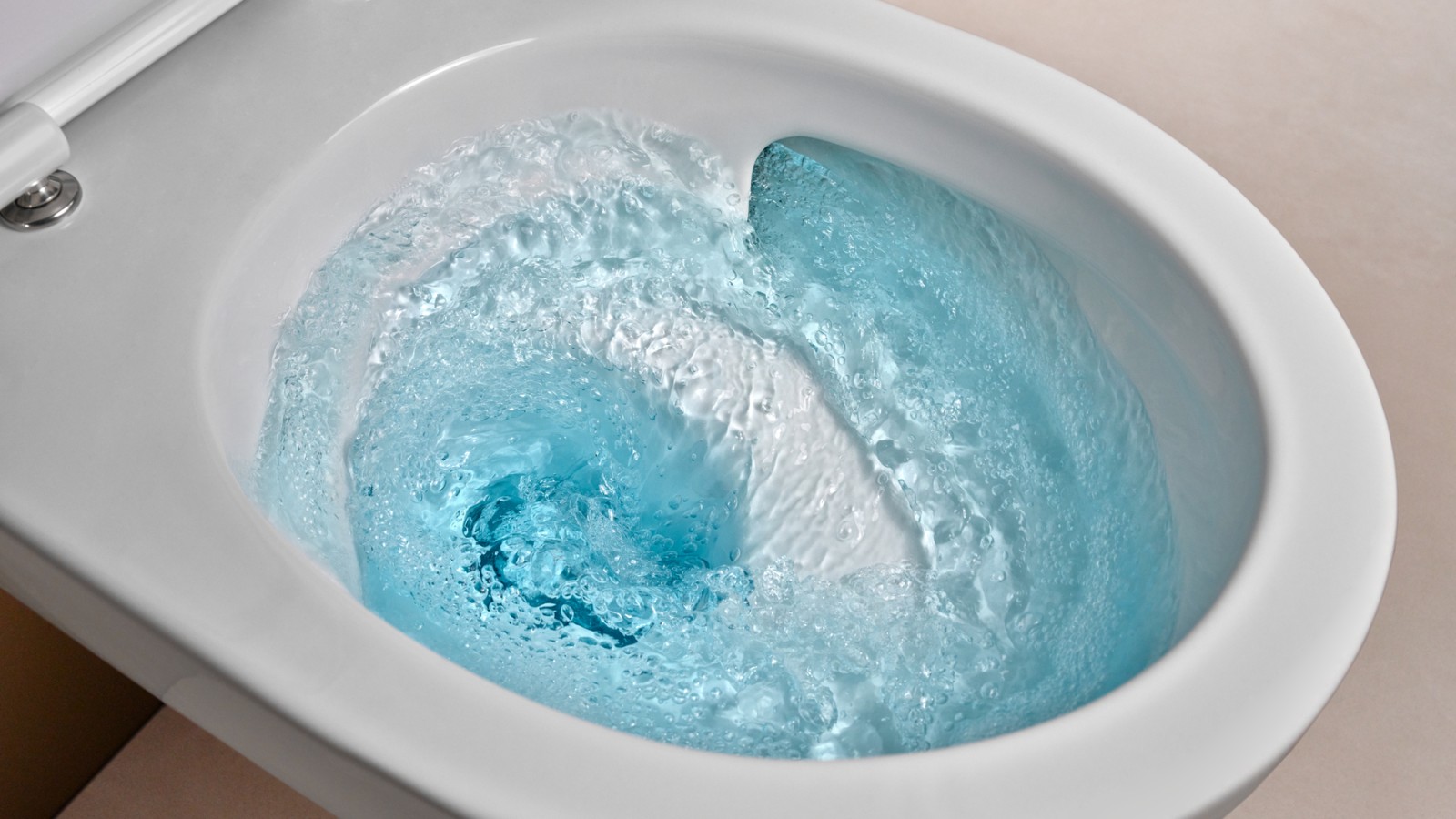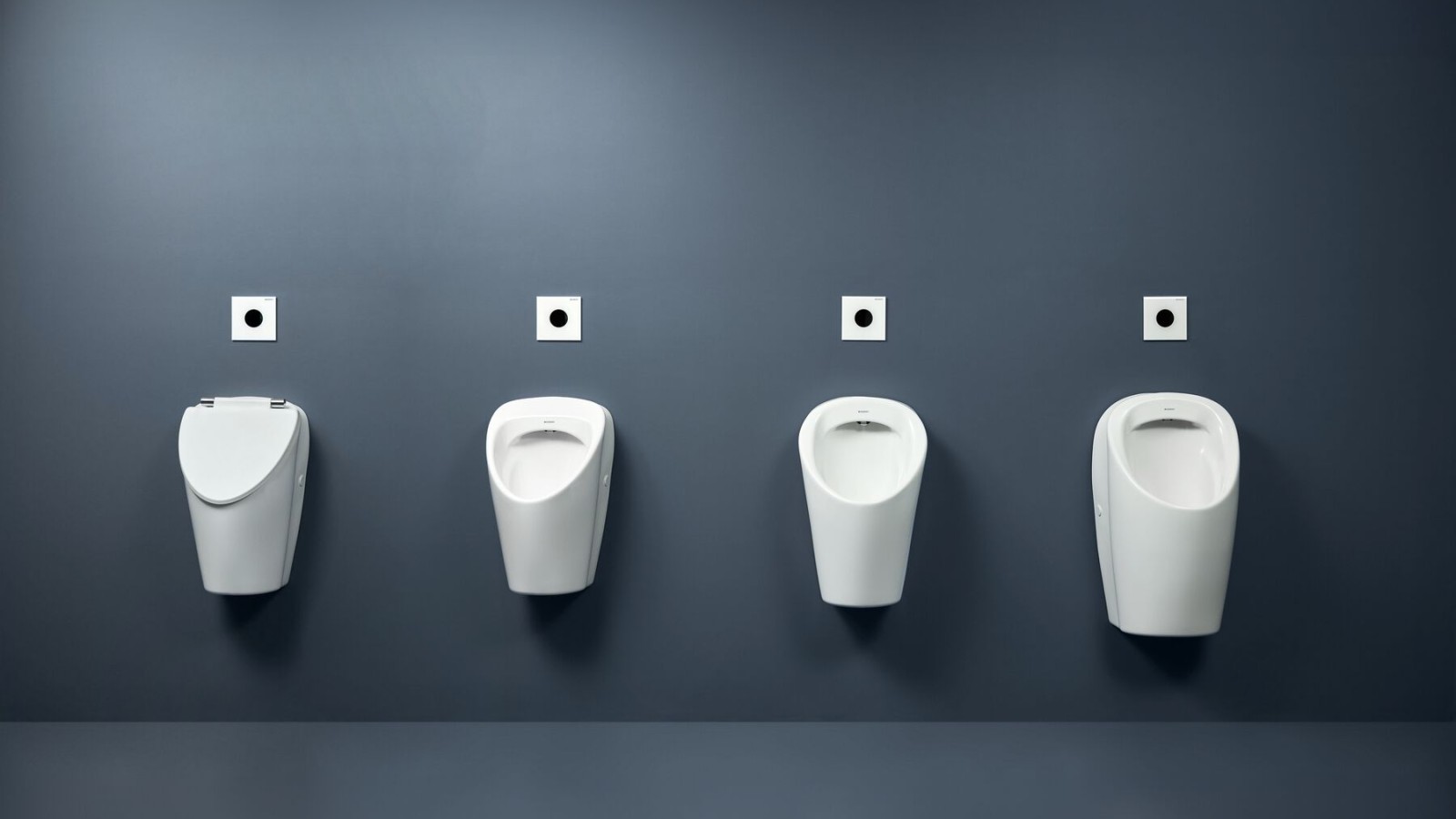Less water for toilet flushing Geberit WC system minimises water consumption in everyday use
Toilet flushing accounts for around one third of daily water consumption in private households. Geberit makes an important contribution to reducing water consumption in bathrooms by continuously optimising its flushing technology and WC ceramics.
Water-saving toilets play a key role in reducing household water consumption — with toilet flushing alone accounting for roughly one-third of daily use. Geberit places particular emphasis on achieving a thorough flush with as little water as possible. The greatest savings are achieved when just one flush is enough to completely remove all residues — saving an average of six litres of water each time.
Award-winning TurboFlush technology
The efficiency of a toilet system depends largely on the flushing technology and the toilet ceramics. Geberit has now made its TurboFlush technology available across all price segments. Thanks to an asymmetrical inner geometry, the flush water is guided in a powerful vortex through the bowl, ensuring thorough and complete cleaning. In fact, the flush performance required by international standards is exceeded by up to ten times. What's more, Geberit Acanto ceramics with TurboFlush technology came out on top in an independent practical test carried out by Esslingen University of Applied Sciences (DE). Geberit Acanto was clearly ahead, particularly in flush tests with small amounts of water.

80% water savings since the 1950s
In addition to the ceramics, Geberit has optimised the water flow of the entire WC system. This includes the Geberit cistern with individually adjustable flush valve, triggered by the Geberit actuator plates. The seamless interaction of all components allows for significant water savings. Compared to older toilets that use up to 14 litres per flush, the Geberit WC system uses as little as 2.6 litres for a partial flush and starts from 4 litres for a full flush. According to a model calculation, this has reduced water consumption for toilet flushing by around 80% compared to 1952 – from an average of 70 litres to 14 litres per person per day.
Potential savings in public toilets
Water consumption also plays a key role in public toilets. Many Geberit urinal models already flush reliably with just 0.5 litres. If they are operated in hybrid mode, additional water is saved. Instead of flushing after each use, the flush is triggered either at regular intervals or with a time delay after the last use, thus saving water when the system is not in use. The Geberit urinal range is complemented by completely waterless models. However, as less flush water tends to increase water consumption for cleaning, Geberit offers an efficiency calculator that transparently shows the environmental impact, operating costs and water consumption of different urinal systems. This makes it easy to compare different systems in terms of their overall performance. In addition, the use of electronically controlled taps on washbasins can reduce water consumption in public toilet facilities by almost 50% compared to conventional taps.

Good ratings thanks to water-saving sanitary technology
Building labels now ensure transparency and enable buildings to be compared, for example in terms of energy consumption or environmental impact. There are many different certification systems that also assess water consumption in buildings. In bathrooms, the main factors assessed are the built-in flushing systems and the calculated average flush volumes. The water-saving Geberit flushing systems and optimised WC ceramics can help achieve an optimal rating in common certification schemes, making Geberit a reliable partner for sustainable construction.
Press enquiries
WAA Chosen
Wrens Court
58 Victoria Road
Sutton Coldfield
West Midlands
B72 1SY
Email: geberit@waachosen.co.uk
Tel: 0121 321 1411
For urgent press enquiries only please contact:
Jo Medlicott: 07788 9100 59